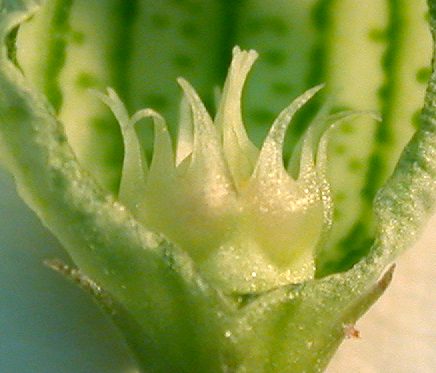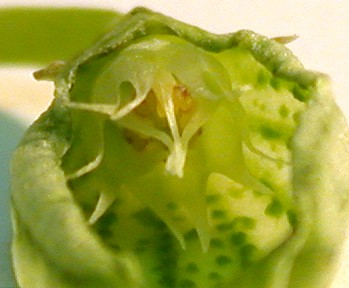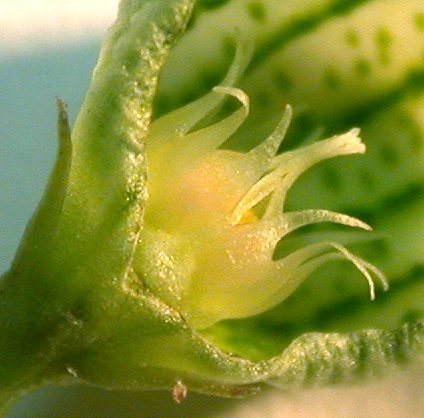 |
C.arabica is native to Saudi Arabia, and Yemen. |
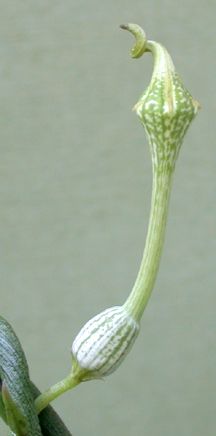 |
AUGUST 2002 - My 'new' little arabica abel fayfa has bloomed. The first bud appeared around the 2nd of August and had a twisted end on the flower tube. After this one opened and passed, the plant really grew fast.
|
The new flowers are just about 2 inches (5cm) tall and less than a half inch (1cm) wide. It looks like there will be blooms at each node (as long as the hot weather holds?).
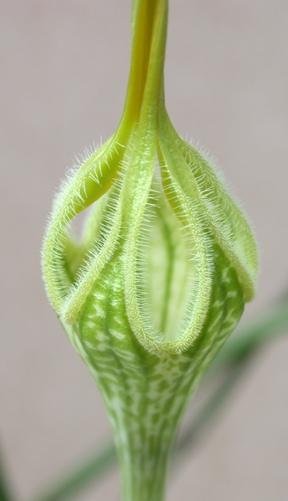 |
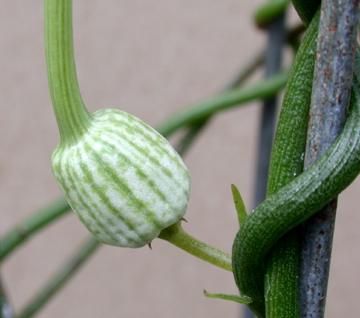
By the 18th there were three grown flowers, one of which had opened and others were buds reaching maturity. These all lacked the twist of the first flower.
If anyone reading this can identify the insect I would like to know just what they are. Send me a note.
I went outside mid-morning after the second flower opened and noticed that it had attracted visitors. I could see that they were interested in the open end of the flower, some went inside, maybe this one will be pollinated. My new camera allows me to get much closer and the pictures reveal many details that are practically invisible in person. The little gnat-like insects looked gray and moved quickly. The pictures show some to be white with gray stripes across the dorsal side of their abdomens. Another picture shows them apparently eating from the grooves in the twisted corolla end.
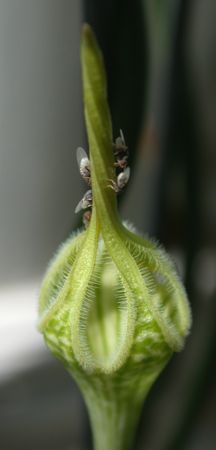
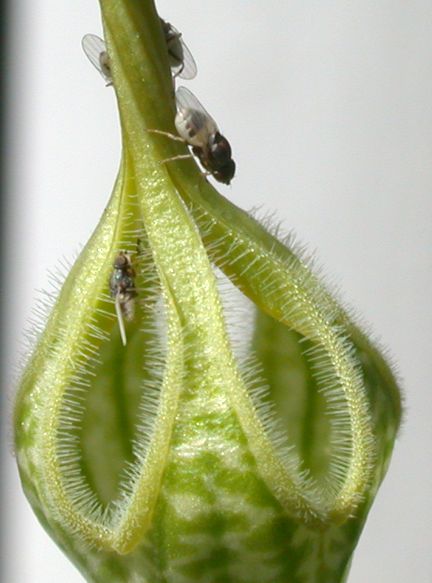
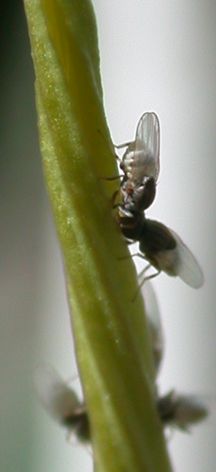
November 2, 2002 - There was one last bloom yestreday and I took the opportunity to make some shots of the inside of the blossom. ( I have brought all of the ceropegias inside since the night time temperatures are in the low 40's now with occasional dips into the 30's. There are a few rooted cuttings still outside and they seem to be fine. )
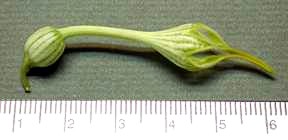
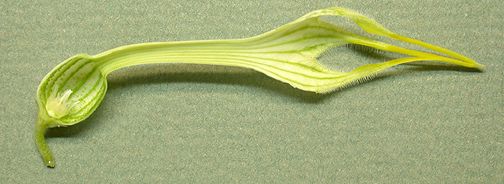
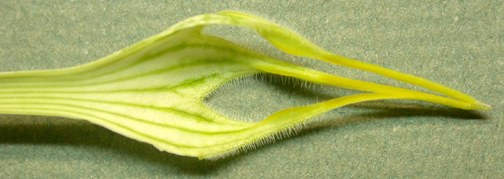
I was surprised to see that there are no hairs inside the corolla tube and none in the inflated chamber either. The green stripes, however, have taken on a sculptural presence as irregular raised lines on the inside of the chamber.
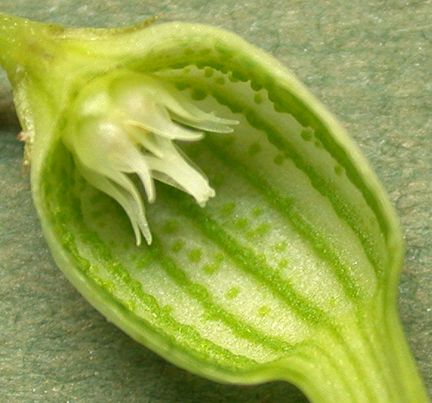
It was difficult to get a good look at the corona, its white, translucent nature made it difficult for the digital camera to gain both good exposure and focus. So here are three views from various angles to help you see the coronal structure.
